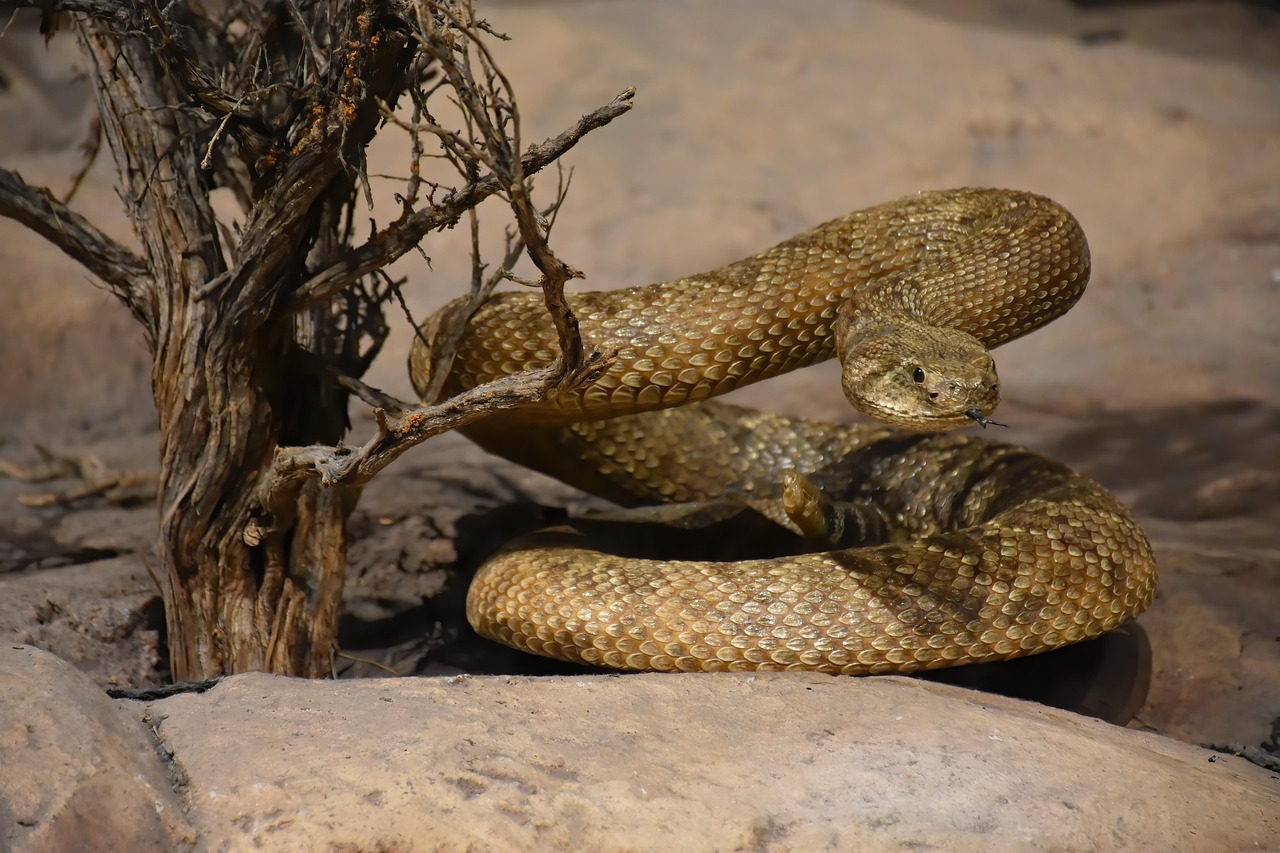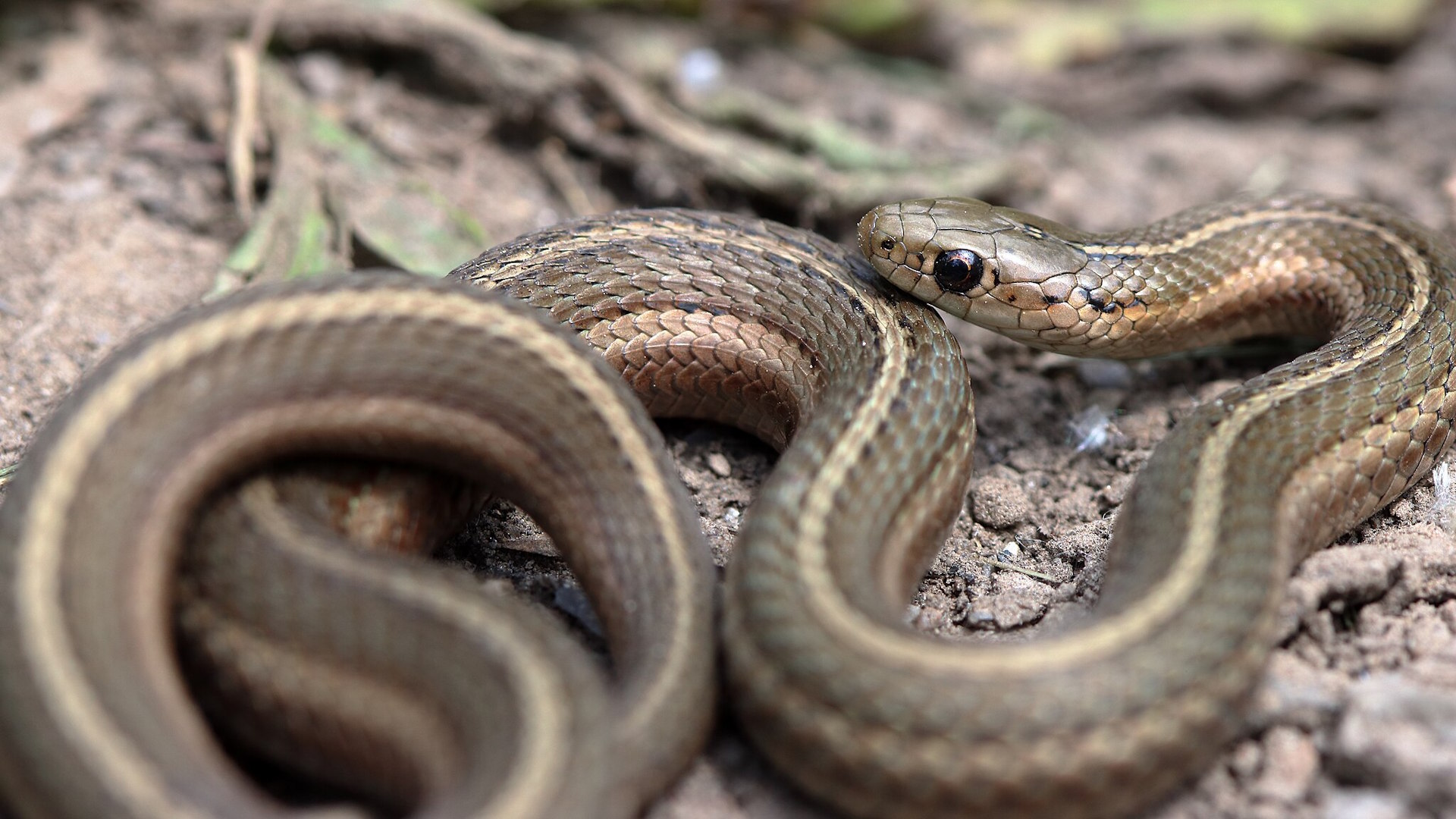North America is home to a diverse range of venomous snakes, each with unique characteristics, habitats, and potentially deadly capabilities. While snake encounters are relatively rare and fatalities even rarer thanks to modern medical treatments, these reptiles command respect and caution. From the notorious rattlesnakes of the desert to the water moccasins lurking in southern swamps, venomous snakes play crucial roles in their ecosystems while presenting varying degrees of danger to humans. This article explores the most dangerous venomous serpents slithering across the North American continent, examining their venom potency, distribution, behavior patterns, and what makes each species particularly hazardous.
The Eastern Diamondback Rattlesnake: North America’s Heavyweight Champion
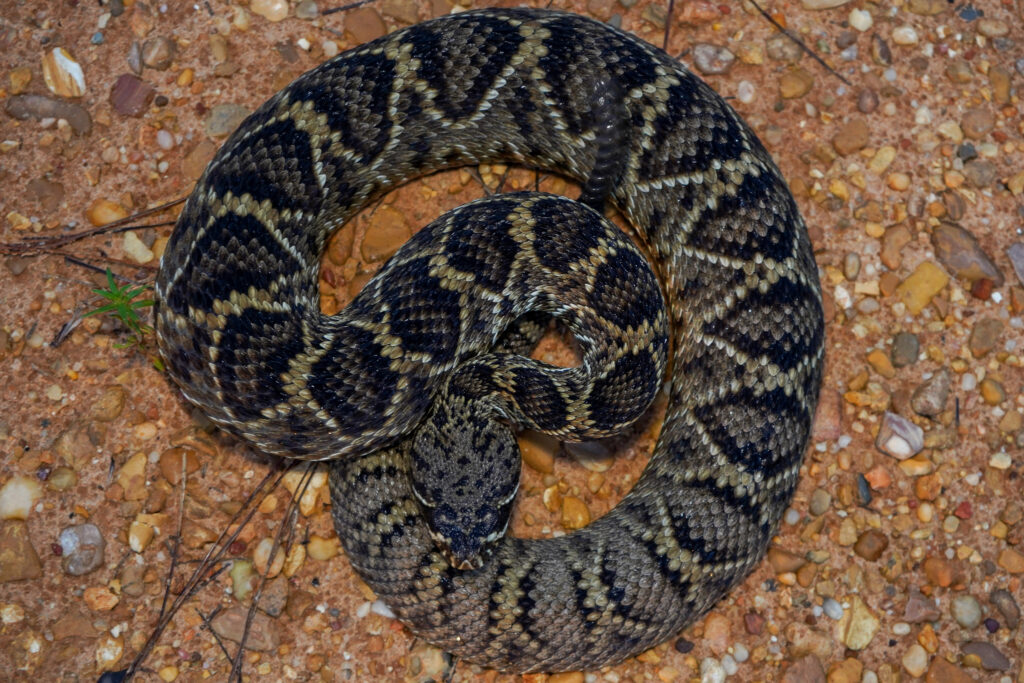
The Eastern Diamondback Rattlesnake (Crotalus adamanteus) reigns as North America’s largest and most dangerous venomous snake, capable of reaching lengths over 7 feet and delivering massive amounts of potent hemotoxic venom. Found primarily in the southeastern United States from North Carolina to Florida and west to eastern Louisiana, these imposing serpents prefer pine flatwoods, sandy woodlands, and coastal scrub habitats. Their venom contains a complex mixture of enzymes that destroy tissue, disrupt blood clotting, and can cause severe internal hemorrhaging, tissue death, and potentially amputation or death if left untreated. The Eastern Diamondback is responsible for the most snake-related fatalities in North America, although deaths have decreased significantly with the advent of antivenom and proper medical care.
The Western Diamondback Rattlesnake: Desert Danger
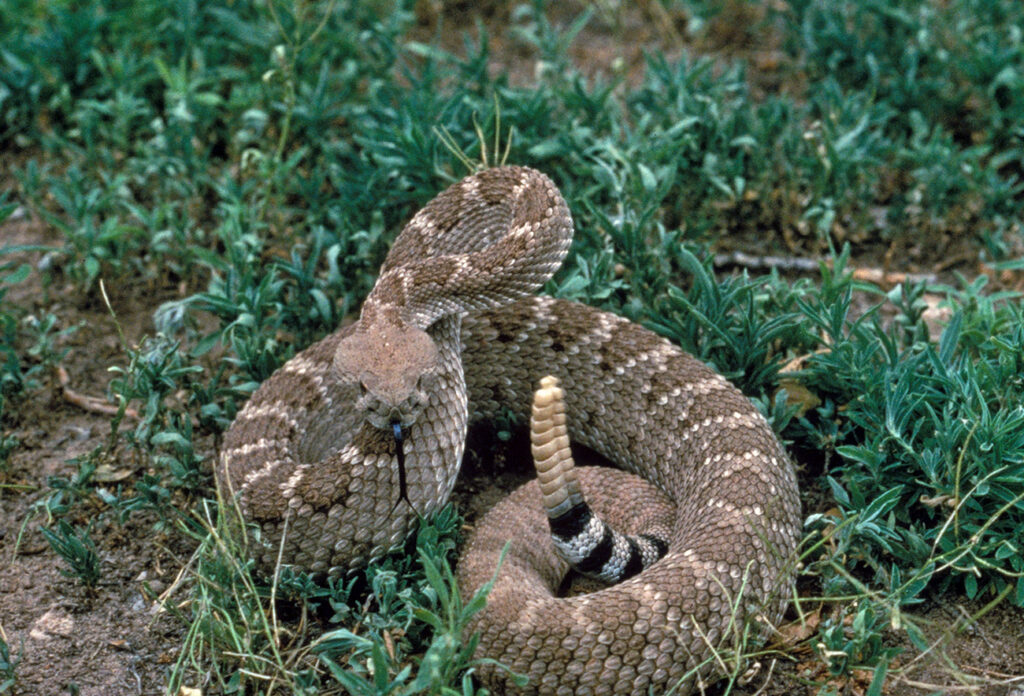
The Western Diamondback Rattlesnake (Crotalus atrox) stands as one of the most recognizable and dangerous snakes in the southwestern United States and northern Mexico. Averaging 3-5 feet in length, these snakes are identified by their distinctive diamond-patterned backs, black and white banded tails, and the characteristic rattle that serves as a warning to potential threats. Their habitat spans from central Arkansas to central California, thriving in desert regions, grasslands, and rocky hillsides. Western Diamondbacks possess a highly potent hemotoxic venom that destroys tissue and causes internal bleeding, with each bite potentially delivering enough venom to kill several adults without proper medical treatment. Their aggressive defensive posture, willingness to stand their ground when threatened, and tendency to deliver full venom loads make them particularly dangerous to humans who venture into their territory.
The Timber Rattlesnake: Eastern Forests’ Hidden Threat
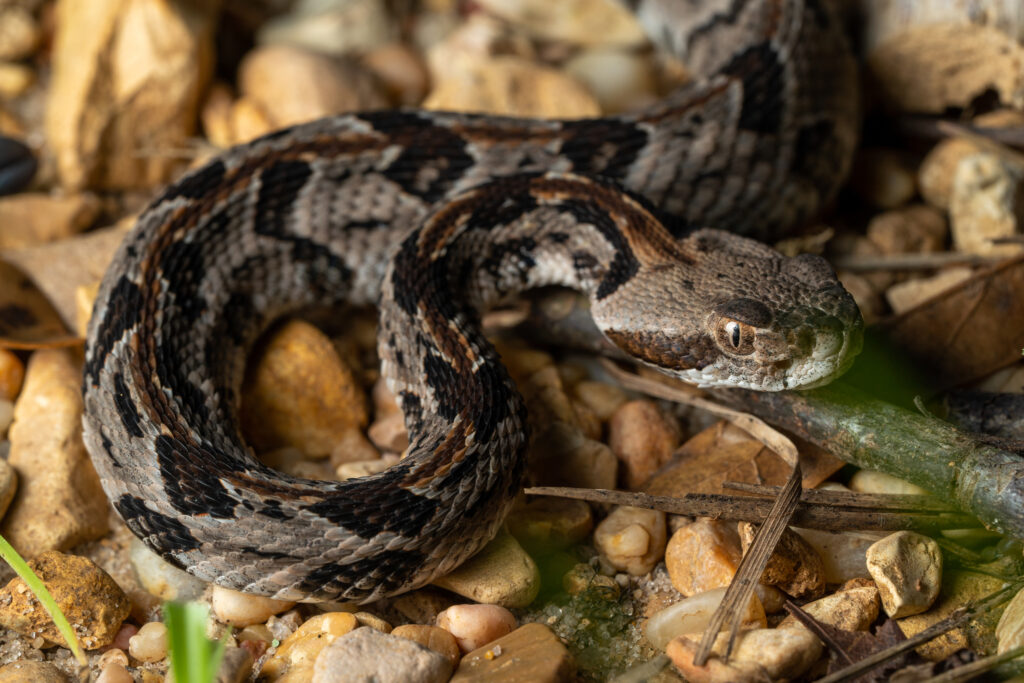
The Timber Rattlesnake (Crotalus horridus) represents one of the most dangerous venomous snakes in the eastern United States, with a range extending from New Hampshire to northern Florida and west to eastern Texas and Minnesota. These substantial pit vipers typically grow to 3-5 feet in length and display varying color patterns from yellow to black, with distinctive dark chevron-shaped crossbands. Their venom contains both hemotoxic and neurotoxic components, making bites particularly dangerous as they can simultaneously attack the nervous system and destroy tissue. Timber Rattlesnakes tend to be more docile than other rattlesnake species, often relying on their excellent camouflage rather than confrontation, which paradoxically increases the danger as hikers may step on them without noticing their presence. Despite their potent venom, these snakes are becoming increasingly rare in many parts of their range due to habitat destruction and persecution.
The Mojave Rattlesnake: The Desert’s Neurotoxic Threat
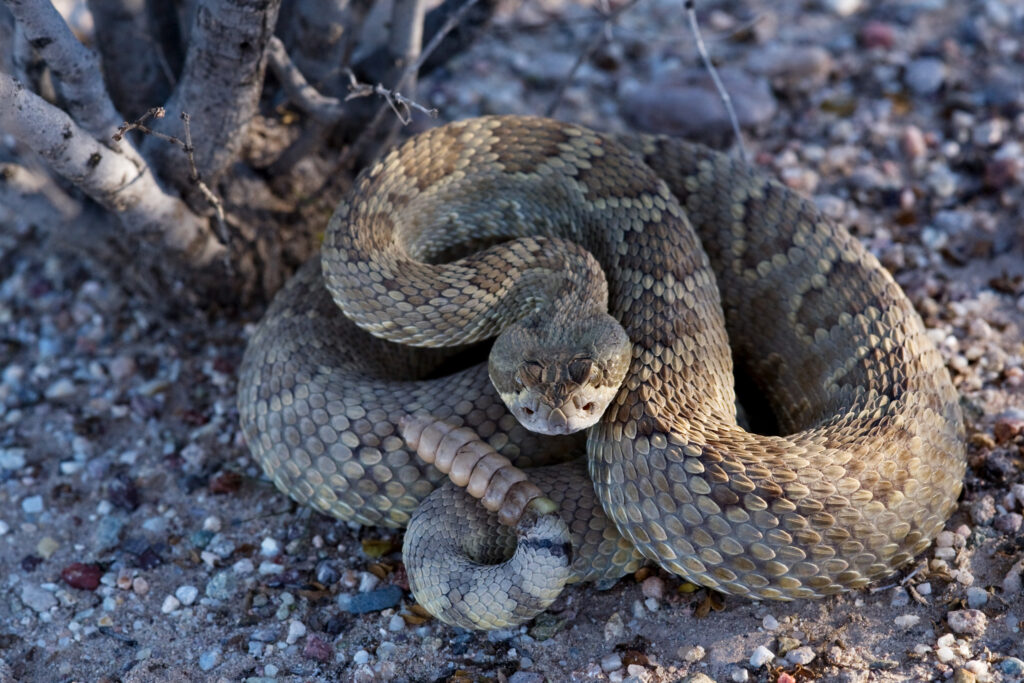
The Mojave Rattlesnake (Crotalus scutulatus) distinguishes itself as perhaps North America’s most dangerous rattlesnake due to its unique venom composition. Unlike most rattlesnakes that primarily produce hemotoxic venom, the Mojave Rattlesnake’s venom often contains a potent neurotoxin called Mojave toxin, which attacks the nervous system and can cause respiratory failure. Found in the deserts of the southwestern United States and central Mexico, these medium-sized rattlesnakes typically reach 2-4 feet in length with a distinctive greenish-gray to light brown coloration. Their venom is considered up to 16 times more toxic than that of the Western Diamondback, and what makes them particularly dangerous is that symptoms may develop slowly, potentially giving victims a false sense of security and delaying critical medical treatment. Additionally, their tendency to deliver multiple strikes when threatened increases the risk of severe envenomation.
The Cottonmouth (Water Moccasin): Aquatic Ambusher
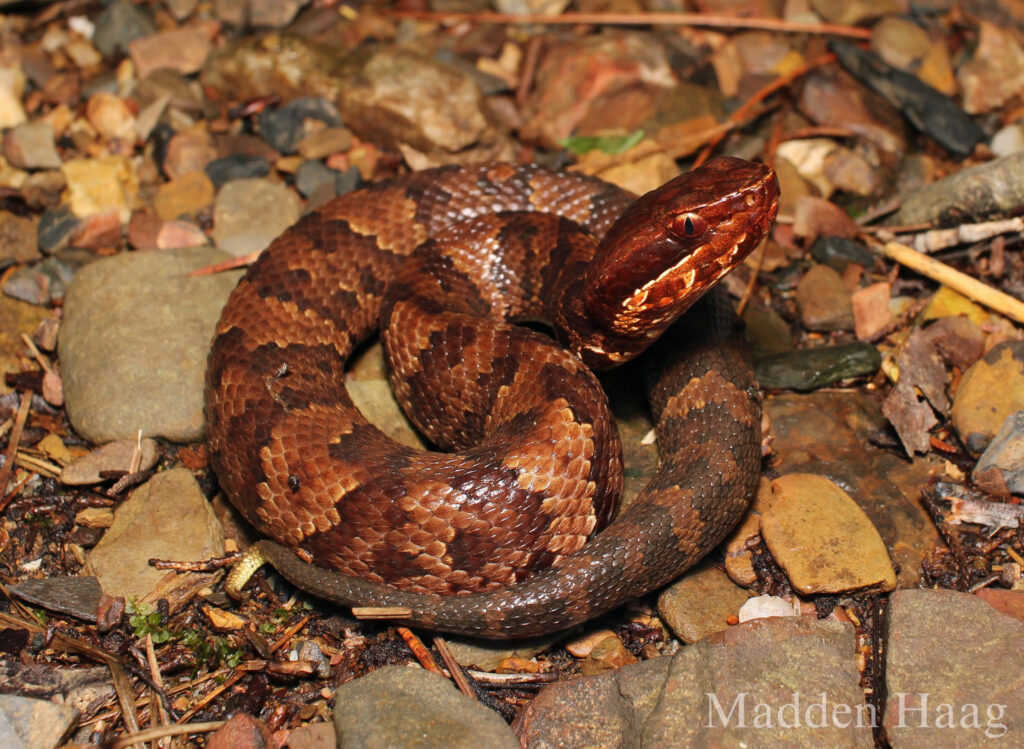
The Cottonmouth or Water Moccasin (Agkistrodon piscivorus) presents a unique danger as North America’s only semi-aquatic venomous snake, inhabiting swamps, marshes, streams, and ponds throughout the southeastern United States. Growing to an average length of 2-4 feet, these muscular pit vipers are easily identified by their dark coloration, broad triangular heads, and the distinctive white lining of their mouths that they display when threatened—hence the name “cottonmouth.” Their hemotoxic venom is particularly destructive to tissue and can lead to severe pain, swelling, and tissue necrosis. What makes Cottonmouths especially dangerous is their territorial behavior, tendency to stand their ground rather than flee when encountered, and habitat overlap with popular human recreation areas. Unlike most snakes that avoid confrontation, cottonmouths sometimes approach intruders in what appears to be aggressive behavior, though this is typically defensive in nature.
The Copperhead: The Common Danger
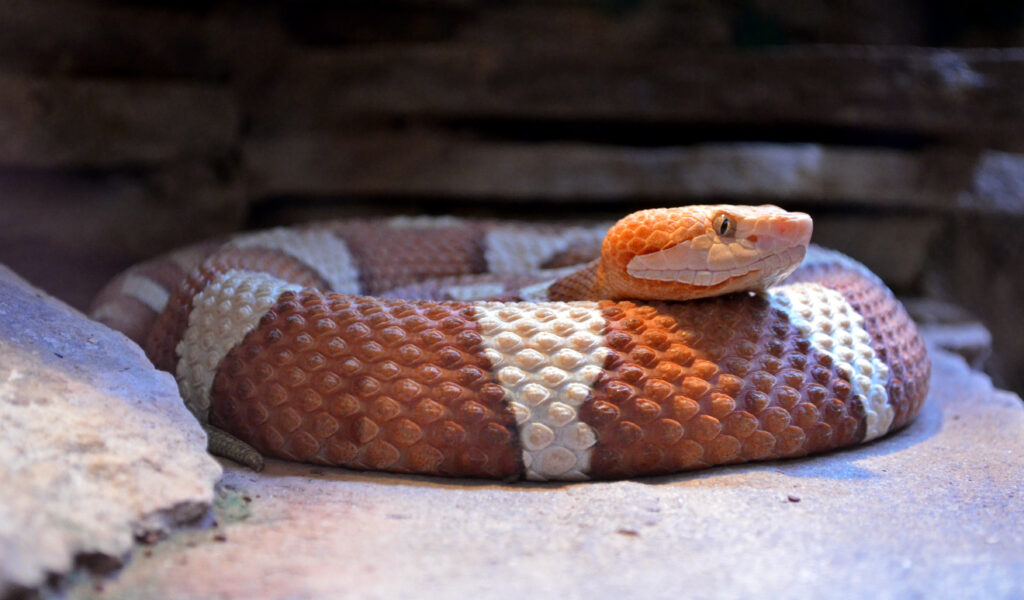
The Copperhead (Agkistrodon contortrix) earns its place among North America’s most dangerous venomous snakes not because of venom potency but due to the frequency of bites it inflicts. Responsible for more venomous snakebites in the United States than any other species, copperheads occupy a vast range from Massachusetts to Nebraska and south to Mexico, thriving in woodland habitats, rocky areas, and even suburban environments. These medium-sized snakes, typically 2-3 feet long, are identified by their distinctive copper-colored heads and unique hourglass-patterned bands. Although their venom is considered mild compared to other pit vipers and rarely fatal to healthy adults, copperhead bites can cause severe pain, tissue damage, and secondary infections requiring medical intervention. Their exceptional camouflage and habit of freezing rather than fleeing when threatened make accidental encounters common, particularly when people are gardening, hiking, or gathering firewood in their habitats.
The Eastern Coral Snake: Colorful and Lethal
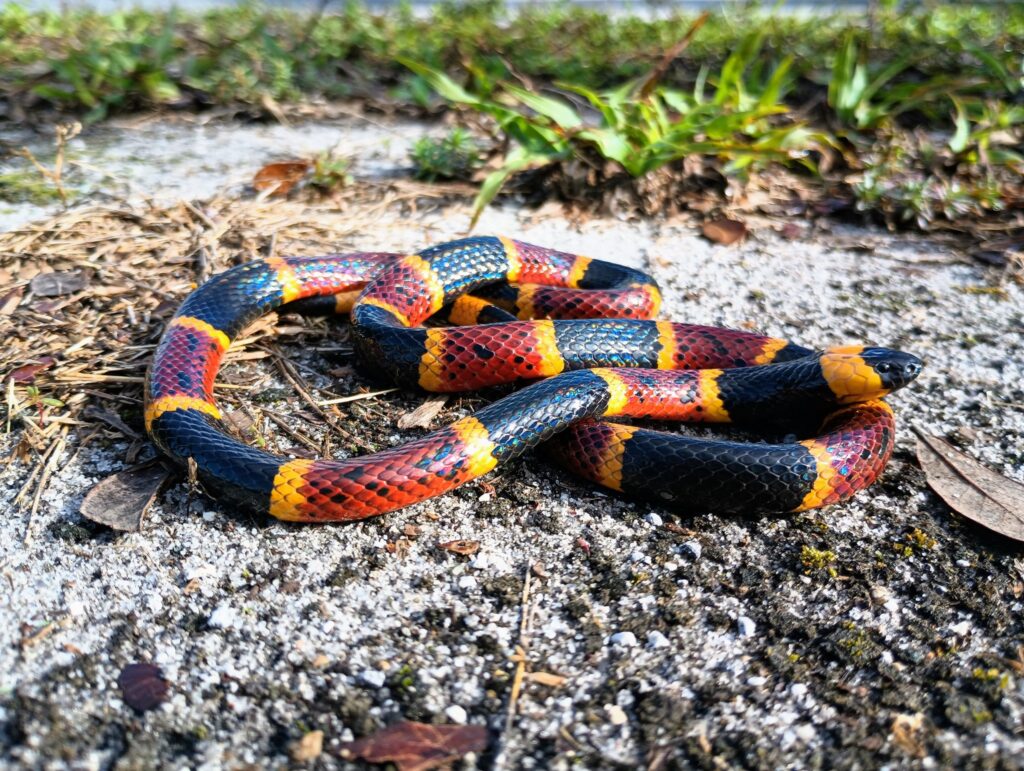
The Eastern Coral Snake (Micrurus fulvius) represents a different danger entirely as one of North America’s only elapid snakes, related to cobras and sea snakes rather than pit vipers. Identified by their distinctive red, yellow, and black banding pattern (remember the rhyme: “red touch yellow, kill a fellow”), these relatively small and slender snakes typically reach only 2-3 feet in length. Native to the southeastern United States from North Carolina to Florida and west to Texas, coral snakes prefer sandy and wooded areas, often spending much of their time underground or under leaf litter. Unlike pit vipers, coral snakes possess a potent neurotoxic venom that attacks the nervous system, potentially causing respiratory failure and death. Though coral snakes are shy and rarely bite humans, their danger lies in their small, fixed fangs that require a chewing motion to deliver venom effectively—meaning that if they do bite, they often hold on for several seconds, ensuring envenomation.
The Arizona Coral Snake: Western Neurotoxic Threat
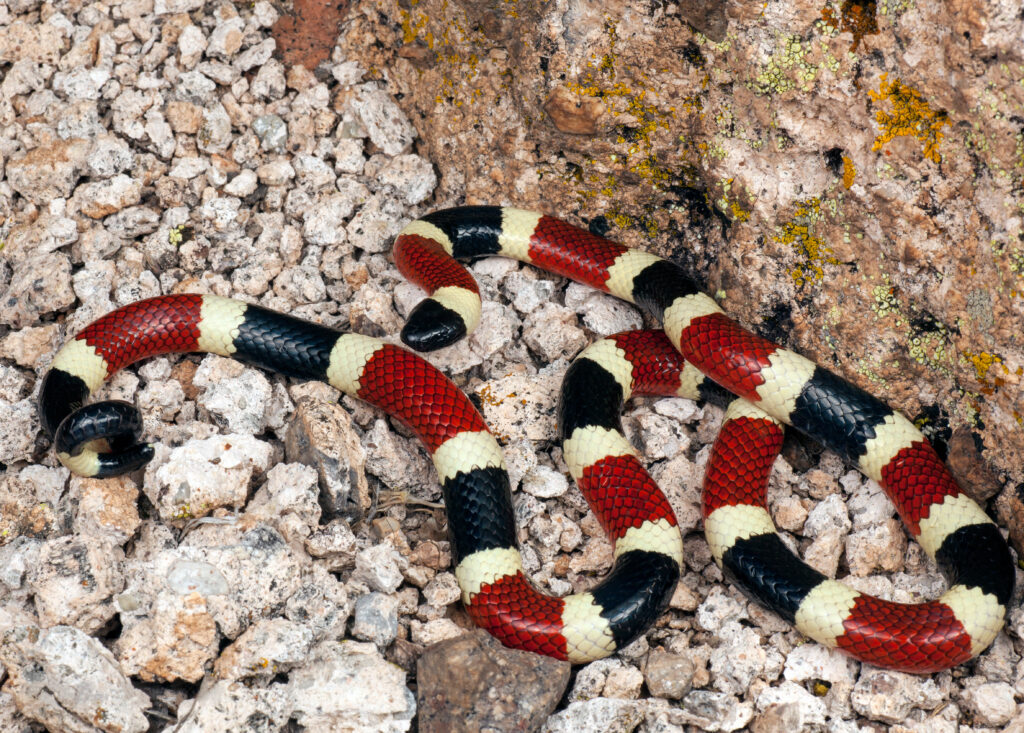
The Arizona Coral Snake (Micruroides euryxanthus), while smaller than its eastern relative, presents a similar neurotoxic danger in the southwestern United States and northern Mexico. Typically growing to just 13-22 inches in length, these diminutive snakes feature the characteristic coral snake pattern of red, black, and yellow bands, though with some pattern differences from their eastern cousins. Found primarily in Arizona, New Mexico, and parts of Mexico, they inhabit desert and semi-arid regions, often hiding beneath rocks, in burrows, or under leaf litter. Their venom contains potent neurotoxins similar to those of cobras, which can potentially cause respiratory paralysis and death if left untreated. Though bites from Arizona Coral Snakes are extremely rare due to their secretive nature and reluctance to bite, their small mouths, and need to chew to inject venom effectively, any bite should be considered a serious medical emergency requiring immediate treatment, as respiratory support may become necessary.
The Prairie Rattlesnake: Plains Predator
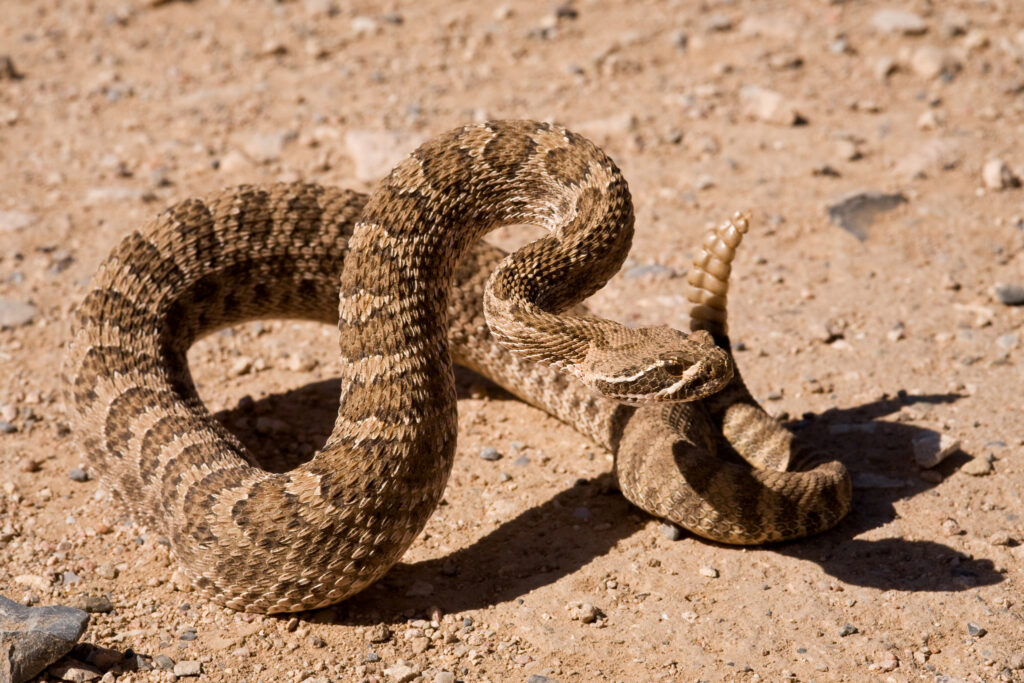
The Prairie Rattlesnake (Crotalus viridis) dominates the grasslands, prairies, and semi-arid regions of western North America, ranging from Canada through the United States and into northern Mexico. These medium-sized rattlesnakes typically grow to 3-5 feet in length and display greenish-gray to brown coloration with dark oval blotches along their backs. Prairie Rattlesnakes possess powerful hemotoxic venom that destroys tissue and disrupts blood clotting, with effects that can lead to severe pain, swelling, tissue damage, and potentially death if left untreated. What makes these snakes particularly dangerous is their widespread distribution across popular hiking, farming, and ranching areas, increasing the likelihood of human encounters. Additionally, their ability to thrive in a variety of habitats from mountains to prairies and their tendency to den communally in large numbers during winter creates hotspots of potential danger during spring emergence and fall aggregation.
The Tiger Rattlesnake: Small But Deadly
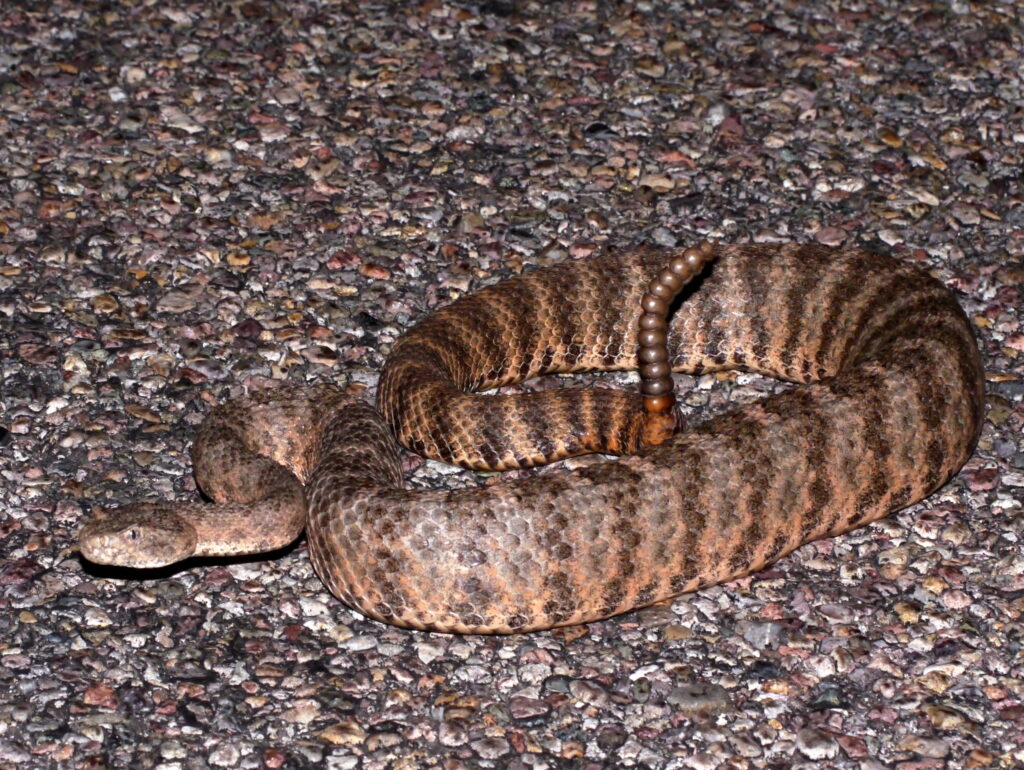
The Tiger Rattlesnake (Crotalus tigris) may be relatively small compared to other rattlesnakes, typically reaching only 2-3 feet in length, but it compensates with exceptionally potent venom. Native to the southwestern United States and northwestern Mexico, this species inhabits rocky foothills, canyons, and desert mountain slopes in southern Arizona and Sonora, Mexico. Tiger Rattlesnakes are easily identified by their distinctive pattern of closely spaced crossbands on a gray background and their disproportionately small heads compared to their bodies. Despite their size, they possess what is considered among the most toxic rattlesnake venoms on a drop-for-drop basis, containing a powerful mixture of neurotoxins and hemotoxins. Their relatively short fangs and small venom yield are somewhat mitigating factors, but any bite from a Tiger Rattlesnake constitutes a serious medical emergency requiring immediate treatment due to the venom’s extreme potency and rapid action.
The Massasauga Rattlesnake: Northern Venom
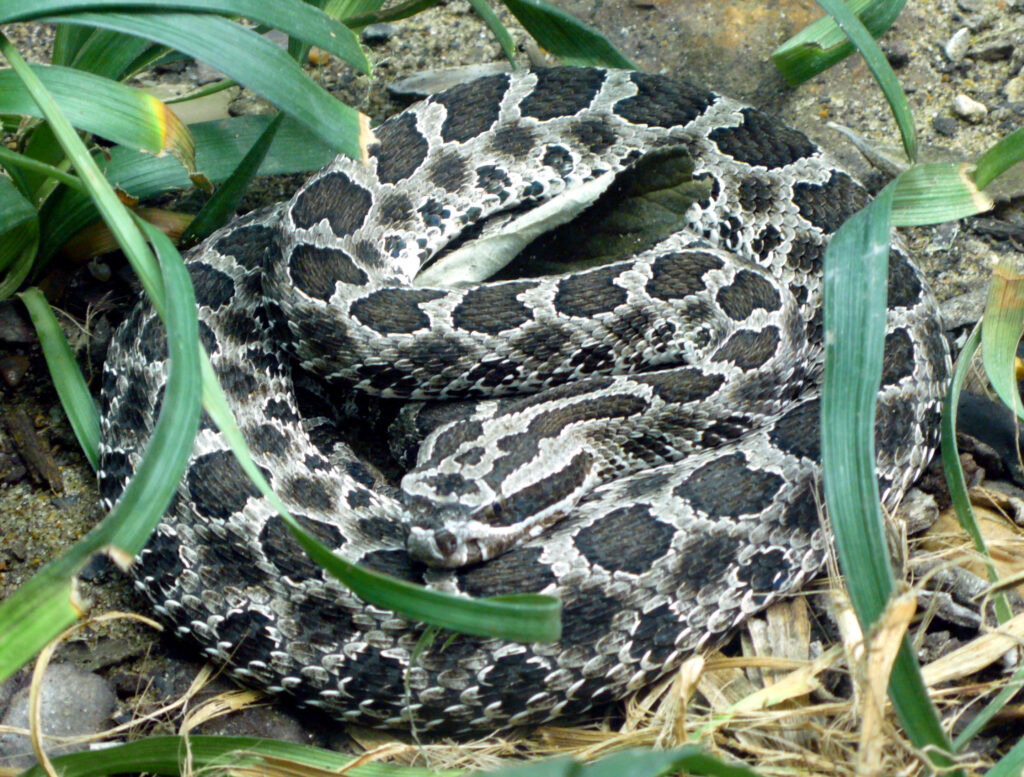
The Massasauga Rattlesnake (Sistrurus catenatus) represents one of the few venomous snakes adapted to the cooler northern regions of North America, inhabiting wetlands, marshes, and wet prairies from southern Ontario through the Great Lakes states and into parts of the Midwest and southern states. These small to medium-sized rattlesnakes typically reach 2-3 feet in length and are characterized by their gray or brown coloration with dark brown blotches and a relatively small rattle. Massasaugas possess a moderately potent hemotoxic venom that can cause significant tissue damage, though fatalities are extremely rare with proper medical treatment. What makes these snakes notable is their endangered or threatened status throughout much of their range, as wetland habitat destruction has dramatically reduced their populations. Despite their declining numbers, Massasaugas remain medically significant and potentially dangerous, particularly in regions where people may be unfamiliar with venomous snakes and therefore slower to seek appropriate medical care following a bite.
The Ridge-nosed Rattlesnake: Montane Menace
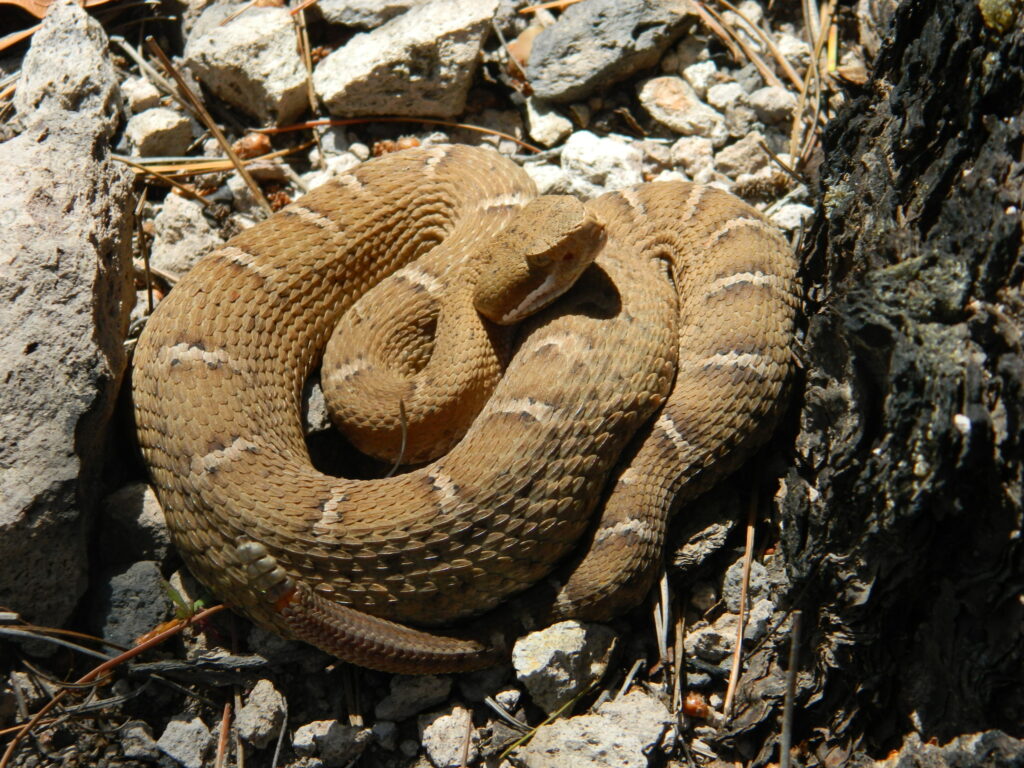
The Ridge-nosed Rattlesnake (Crotalus willardi), with its various subspecies, inhabits the mountain woodlands and canyon bottoms of the southwestern United States and northern Mexico, particularly in Arizona, New Mexico, and the Sierra Madre Occidental. These small rattlesnakes, rarely exceeding 2 feet in length, are distinguished by the raised scales (ridges) on their snouts, as well as their grayish-brown coloration with dark crossbands and distinctive white facial stripes. While their venom is less potent than many other rattlesnake species, it still contains tissue-destroying hemotoxins capable of causing serious medical consequences. The Arizona Ridge-nosed Rattlesnake (C. w. willardi) holds the distinction of being Arizona’s state reptile despite its potential danger, reflecting the complex relationship between humans and these venomous reptiles. Their primary danger comes from their habitat in popular hiking and recreation areas, though their typically mild disposition and reluctance to bite unless directly threatened somewhat mitigates the risk they pose.
Snake Bite Prevention and First Aid

Preventing venomous snake encounters begins with awareness and appropriate precautions when in snake country. Always wear closed-toe shoes or boots and long pants when hiking, watch where you place your hands and feet, use a walking stick to probe areas ahead of you, and avoid reaching into rock crevices, woodpiles, or dense vegetation without visual confirmation of safety first. If you do encounter a snake, remain calm, slowly back away, and allow the snake to retreat—most bites occur when people try to kill, capture, or harass snakes. In the event of a venomous snake bite, proper first aid is crucial: keep the victim calm and still to slow venom spread, remove jewelry or tight items near the bite site before swelling begins, keep the affected limb immobilized at or slightly below heart level, and seek immediate medical attention. It’s important to note what not to do: never apply a tourniquet, cut the wound, attempt to suck out venom, apply ice, or give the victim alcohol or medications without medical direction, as these actions may worsen outcomes.
In conclusion, North America hosts a diverse array of venomous snakes that have evolved different hunting strategies, habitats, and venom compositions. From the powerfully built Eastern Diamondback with its tissue-destroying hemotoxins to the slender Coral Snake with its paralyzing neurotoxins, each species presents unique dangers to humans who venture into their territories. Despite their fearsome reputations, venomous snakes rarely seek conflict with humans and serve vital ecological roles as predators controlling rodent populations and as prey for other wildlife. With proper knowledge, respect, and caution, humans can coexist with these remarkable reptiles while minimizing the risks they pose. Modern medical care, including antivenom development, has dramatically reduced fatalities from snake bites, but the best strategy remains prevention through awareness and understanding of these fascinating but potentially dangerous creatures.

